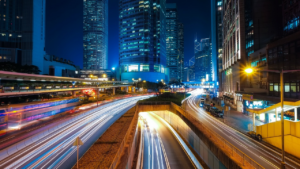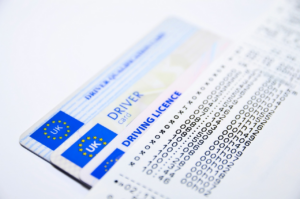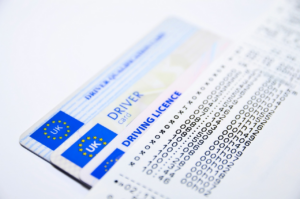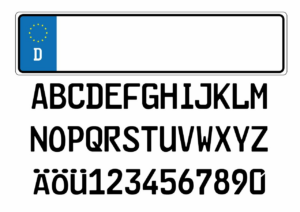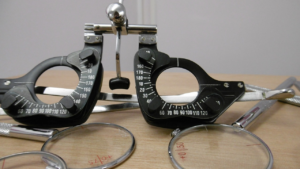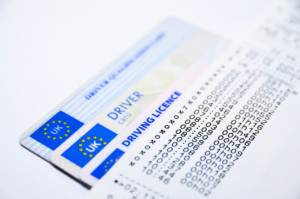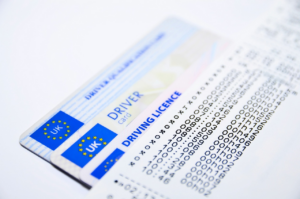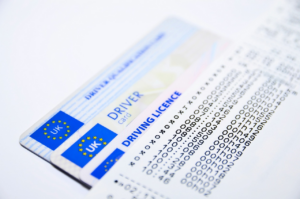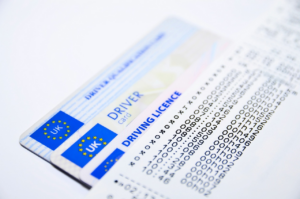Are you a driver who often finds themselves at busy intersections, feeling overwhelmed and unsure of how to navigate the chaos? Fear not, for we have compiled a list of 7 tips and tricks to help you confidently handle even the busiest of intersections. By following these guidelines, you can ensure your safety and the safety of those around you, as well as keep traffic flowing smoothly.
First and foremost, it’s important to understand the traffic patterns of the intersection you’re approaching. Pay attention to the flow of cars, the timing of traffic lights, and any signs or markings on the road. This will help you anticipate what to expect and make informed decisions while driving.
Additionally, staying alert and aware of your surroundings is crucial. Keep distractions to a minimum and scan the area for any potential hazards, such as pedestrians or bicyclists. By being mindful and proactive, you can avoid accidents and maintain control of the situation.
Understand Traffic Patterns
To truly navigate through chaotic crossroads, it’s crucial to have a deep understanding of the flow of traffic. This means taking the time to observe and analyze the patterns of the vehicles passing through the intersection.
Are there certain times of day when traffic is heavier? Which lanes tend to move faster? Are there any particular behaviors or habits of drivers in the area that you should be aware of?
Once you’ve gained a good understanding of the traffic patterns in the intersection, you can start to develop strategies for navigating through it safely and efficiently. For example, you might identify the best times of day to cross the intersection, or the best lanes to use depending on where you’re headed.
You might also learn to anticipate certain behaviors of other drivers, such as sudden lane changes or aggressive merging, and adjust your own driving accordingly. Ultimately, by becoming more aware of the traffic patterns in busy intersections, you’ll be better equipped to handle even the most chaotic crossroads with confidence and ease.
Stay Alert and Aware
You need to always be alert and aware when navigating through hectic intersections to ensure your safety and the safety of those around you. It’s important to keep your eyes on the road and constantly scan your surroundings for any potential hazards.
One way to do this is to make sure you have a clear view of the intersection by positioning yourself in the correct lane and using your mirrors to check for any vehicles or pedestrians approaching from all directions.
Another key aspect of staying alert and aware while navigating busy intersections is to anticipate the actions of other drivers or pedestrians. This means keeping a safe distance from the car in front of you and being prepared to brake or swerve if necessary.
Additionally, be aware of any traffic signals or signs and always follow them to avoid confusion or accidents. By staying focused and alert, you can navigate through even the busiest intersections with ease and confidence.
Look for Pedestrian Crosswalks
When navigating busy intersections, it’s important to keep an eye out for designated pedestrian crosswalks. Use these designated areas to cross the street safely and avoid jaywalking, which can be dangerous for both you and drivers.
Additionally, pay attention to pedestrian signals that indicate when it’s safe to cross and when you should wait for traffic to pass. By following these tips, you can ensure a safe and efficient journey through intersections.
Use Designated Crosswalks
Looking both ways before crossing the street using designated crosswalks can help prevent accidents and ensure a safer experience for everyone involved. Not only is it the law, but it’s also the smart thing to do.
Designated crosswalks are specifically marked for pedestrians to cross the street safely, and drivers are required to stop for anyone using them. Using crosswalks can also help direct traffic and prevent confusion for both drivers and pedestrians.
When approaching a designated crosswalk, make sure to look both ways before crossing the street. Even if you have the right of way, it’s important to be aware of any potential hazards. Always cross at a steady pace, and avoid running or darting across the street.
Make eye contact with drivers to ensure that they see you, and be cautious of any vehicles that may be turning or backing up. By following these simple steps, you can ensure a safe and stress-free experience when crossing busy intersections.
Look out for Pedestrian Signals
Don’t miss the pedestrian signals, they’re there to guide you safely across the street. When you approach a busy intersection, always keep an eye out for pedestrian signals. These signals are designed to help you navigate through the intersection safely, and ignoring them could lead to accidents and injuries.
Here are a few things to keep in mind when looking out for pedestrian signals:
- Look for the pedestrian signal on the opposite side of the intersection, as well as the one on your side.
- Pay attention to the countdown timer, which will tell you how much time you have to cross the street safely.
- If the signal is flashing, it means you should not start crossing the street, but if you’re already in the middle of the intersection, finish crossing quickly.
By following these guidelines, you’ll be able to use pedestrian signals to your advantage and stay safe while navigating busy intersections. Remember, it’s always better to be cautious and take your time when crossing the street, especially if you’re unfamiliar with the area.
In addition to being aware of pedestrian signals, it’s important to be mindful of your surroundings at all times. Keep an eye out for cars, bikes, and other pedestrians, and avoid distractions like your phone or headphones.
When you approach an intersection, make sure you’re visible to drivers by wearing bright or reflective clothing, and make eye contact with drivers to ensure they see you. By taking these precautions and following the rules of the road, you’ll be able to navigate busy intersections with confidence and ease.
Be Mindful of Bicyclists
Always be aware of bicyclists while driving through intersections, as they’re vulnerable road users who deserve our utmost respect and caution. When approaching an intersection with bike lanes, make sure to check your blind spots and use your turn signals to indicate your intended direction.
If you need to make a right turn, be sure to merge into the bike lane before turning, giving cyclists enough space to continue straight or turn left if needed. It’s also important to remember that bicyclists may not always follow the same rules as cars, such as stopping at red lights or riding in a straight line.
Be patient and give them plenty of space, especially when passing or turning. Always assume that a bicyclist may be present and adjust your driving accordingly.
By being mindful of bicyclists, we can create safer and more inclusive intersections for all road users.
Plan Your Route
When planning your bike route, it’s important to be mindful of busy intersections and consider using alternative routes. Avoiding busy intersections can help you stay safe and reduce the risk of accidents. By taking alternative routes, you can also enjoy a more scenic and enjoyable ride.
So take some time to plan your route, and enjoy a smooth and stress-free biking experience.
Avoid Busy Intersections
Navigating through less crowded routes can lead to a more efficient and stress-free commute. Instead of taking the most direct route, consider taking a slightly longer route that avoids busy intersections.
Here are some tips to help you avoid busy intersections:
-
Use alternative routes: Try out different routes that may be less crowded. You can use a GPS app or a map to find alternative routes. Sometimes taking a longer route can save you time by avoiding traffic.
-
Look for side streets: Side streets are usually less crowded than main roads. You may need to take a few turns, but it can be worth it if you can avoid a busy intersection.
-
Check the traffic: You can use a traffic app or check local news reports to see if any intersections are experiencing heavy traffic. If you know which intersections to avoid, you can plan your route accordingly.
By avoiding busy intersections, you can reduce your stress level and arrive at your destination more efficiently. Remember to always prioritize safety and follow traffic laws, even on less crowded roads. With a little planning and flexibility, you can find a route that works best for you.
Use Alternative Routes
Using different routes can help you navigate through less crowded areas and make your commute more efficient and stress-free. Take the time to research alternative routes before you hit the road.
You can use online maps or GPS systems to plan your journey and avoid busy intersections. For instance, Google Maps provides real-time traffic updates and suggests the best routes based on traffic conditions. You can also use apps like Waze, which offers turn-by-turn directions, traffic alerts, and information about road hazards.
Another way to find alternate routes is to simply explore your area. Take a different street or road on your way home, and see if it’s a better option than your usual route. Keep in mind that smaller roads and side streets can be less congested but may take slightly longer to travel. However, the extra few minutes you spend on the road may be worth it if it means avoiding a stressful and time-consuming intersection. Plus, you might discover new places or hidden gems in your city that you never knew existed.
Stay Calm and Patient
It’s important to remember to stay calm and patient when dealing with the chaos of busy intersections, so take deep breaths and try to remain level-headed. Here are some tips to help you maintain your composure:
-
Focus on your breathing: When you feel your frustration rising, take a moment to focus on your breathing. Inhale deeply and exhale slowly, allowing yourself to relax and let go of the stress.
-
Keep your eyes on the road: It’s easy to get distracted by all the activity around you, but it’s important to keep your eyes on the road and remain attentive to your surroundings. This will help you react quickly to any sudden changes in traffic patterns.
-
Avoid aggressive maneuvers: It can be tempting to try to speed through the intersection or make a quick turn to beat the traffic, but this will only lead to more chaos and danger. Stay patient and wait for your turn to move through the intersection.
-
Be aware of other drivers: Remember that you’re not the only one on the road, and other drivers may be just as frustrated and stressed as you are. Keep a safe distance from other vehicles and avoid confrontations.
By following these tips, you can navigate busy intersections with confidence and ease, while keeping yourself and others safe on the road. So take a deep breath, stay focused, and remember that patience is key.
Communicate with Others
When navigating busy intersections, it’s important to communicate with others on the road. Use eye contact and hand signals to let drivers know your intentions.
Remember to be polite and respectful, as this can help prevent misunderstandings and accidents. By following these simple guidelines, you can ensure a safer and more efficient commute for yourself and those around you.
Use Eye Contact and Hand Signals
Making eye contact and using hand signals can effectively communicate your intentions at intersections and keep you safe.
When approaching an intersection, make sure to look directly at the drivers around you and make eye contact. This will let them know that you see them and that you’re aware of their presence. By doing this, you can ensure that they’ll see you as well, and that they’ll be more likely to yield to you when it’s your turn to cross.
In addition to making eye contact, it’s also important to use hand signals when turning or changing lanes. This will help to reinforce your intentions and make it clear to other drivers which direction you plan to go.
To signal a left turn, extend your left arm straight out to the side. To signal a right turn, extend your left arm out and bend it upward at the elbow, with your hand pointing upward. And to signal a stop, extend your left arm out and bend it downward at the elbow, with your hand pointing downward.
By using these simple hand signals, you can communicate your intentions clearly and keep yourself and others safe on the road.
Be Polite and Respectful
Being polite and respectful while on the road can greatly improve safety for everyone involved. This is especially true when it comes to busy intersections.
Remember to always treat other drivers and pedestrians with respect and courtesy. When approaching an intersection, be sure to slow down and yield to any pedestrians or cyclists who may be crossing. Use your turn signals to let others know your intentions, and always check for oncoming traffic before proceeding.
It’s also important to be patient and avoid aggressive driving behaviors such as honking or tailgating. Even if you’re in a hurry, remember that safety should always be your top priority.
By showing respect for others and following the rules of the road, you’ll not only improve safety but also help to create a more pleasant driving experience for everyone involved.
So, take a deep breath, stay calm, and remember to be polite and respectful at all times while navigating busy intersections.
Frequently Asked Questions
What are some common mistakes drivers make when navigating busy intersections?
Navigating busy intersections can be daunting, especially if you’re not familiar with the area. One common mistake drivers make is failing to pay attention to traffic signals, such as running red lights or making illegal turns.
Another mistake is not yielding to pedestrians or bicyclists, which can result in accidents. Additionally, some drivers may become impatient and try to rush through the intersection, putting themselves and others at risk.
It’s important to always be alert and aware of your surroundings when driving through busy intersections, and to follow traffic laws to ensure the safety of everyone on the road.
How can pedestrians stay safe at busy intersections?
When it comes to busy intersections, it’s important for pedestrians to stay alert and aware of their surroundings.
To stay safe, start by looking both ways before crossing the street. Make eye contact with drivers to ensure they see you before stepping off the curb. Avoid distractions like texting or listening to music, as they can prevent you from hearing or seeing oncoming traffic.
If there’s a crosswalk, use it and follow the signals. Even if you have the right of way, double-check before crossing.
Finally, walk defensively and be prepared to stop or move out of the way if necessary. By following these guidelines, you can navigate busy intersections safely and with confidence.
Are there any specific rules or laws regarding bicyclists at busy intersections?
As a bicyclist, it’s important to know the specific rules and laws regarding busy intersections.
First and foremost, you should always obey traffic signals and signs. This means stopping at red lights and stop signs, and yielding to pedestrians and vehicles with the right of way.
Additionally, you should always ride in the designated bike lane or as close to the curb as possible. When turning, use proper hand signals and check for any oncoming traffic.
It’s also important to be visible to other drivers and pedestrians, so wear bright clothing and consider adding reflective gear to your bike.
Finally, always be aware of your surroundings and anticipate potential hazards or obstacles. By following these guidelines, you can safely navigate busy intersections on your bike.
What should you do if you get into an accident at a busy intersection?
If you get into an accident at a busy intersection, the most important thing to do is to stay calm and assess the situation.
Check yourself and others involved for injuries, and call 911 if necessary.
Move to a safe area if possible, but don’t leave the scene of the accident.
Exchange information with the other driver, including names, phone numbers, and insurance information.
Take photos of the damage to both vehicles and the surrounding area.
It’s also important to contact your insurance company as soon as possible to report the accident.
Remember to never admit fault or sign any documents without speaking to your insurance company or a lawyer first.
The aftermath of an accident can be stressful and overwhelming, but following these steps can help ensure that you handle the situation safely and effectively.
How can you minimize your wait time at a busy intersection during rush hour?
To minimize your wait time at a busy intersection during rush hour, there are a few things you can do. First, plan your route ahead of time to avoid the busiest intersections.
If you must go through a busy intersection, try to time your arrival for when the light is about to turn green. Additionally, stay in the lane that will allow you to make your turn or continue straight through the intersection without changing lanes. Keep a safe distance from the car in front of you to allow for smooth acceleration.
Finally, avoid distractions such as your phone or adjusting the radio so you can stay alert and ready to move through the intersection quickly and safely.
Conclusion
Now that you’ve learned some helpful tips and tricks for handling busy intersections, you can confidently navigate through them.
Remember to always understand the traffic patterns and stay alert and aware of your surroundings. Look for pedestrian crosswalks and be mindful of bicyclists.
Planning your route ahead of time can also help you avoid any unexpected obstacles. It’s important to stay calm and patient while driving through busy intersections.
Avoid aggressive driving behaviors and communicate with other drivers using your turn signals and hand gestures. By following these steps, you can ensure a safer and smoother driving experience for yourself and those around you.
Drive safely!




















